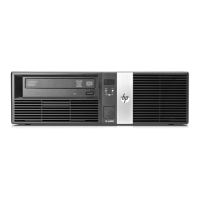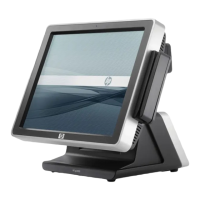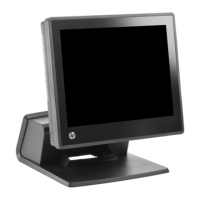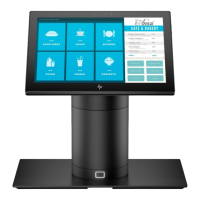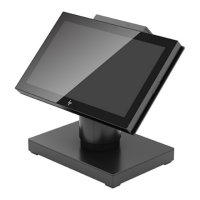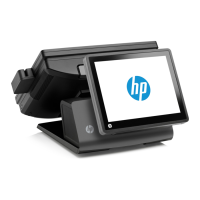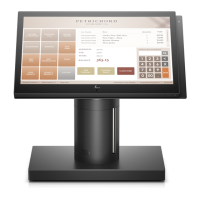Keyboard Control
Table 3-1.
ENTER
Key
Operation
(Continued)
<CR><LF>
if
auto
line
feed mode
is
enabled);
the
cursor
remains
positioned
immediately
following
the
terminator.
The
type
of
handshaking
used
is
determined
as
follows:
InhHndShk(G)
i5
ignored.
InhDC2(H)=l'Io
--->DC1/DC2/DC1
I
nh
DC2(H)
= YES - -
-)
no
hand5hake
BLOCK LINE MODE, FORMAT MODE
Auto
Term(J)
=
1'10
If
the
cursor is
currently
within
an
unprotected field,
all
characters
from
the
current
cursor
position
through
the
next
subsequent
block
terminator
or
non-
displaying
terminator
or
through
the
end
of
the
field
(whichever is encountered first)
are
transmitted
to
the
host
computer
as
a block.
Otherwise
the
terminal
searches
for
the
next
subsequent
unprotected
field
and
transmits
data
from
that
field.
AutoTerm(J)
= YES
If
the
cursor
is
currently
within
an
unprotected field,
the
terminal
inserts
a non-displaying
terminator
at
that
position
and
then
moves
the
cursor
backward
to
the
first
preceding block
terminator
or
non-displaying
terminator
that
is
not
within
a protected field (or
homes
the
cursor
ifnone
is found). All unprotected
and
transmit-only
characters
from
the
new
cursor
position
through
the
next
subsequent
block
terminator
or
non-
displaying
terminator
or
through
the
end
of
the
first
unprotected
field (whichever
is
encountered first)
are
transmitted
to
the
host
computer
as
a block.
If
the
cursor
is
NOT
currently
within
an
unprotected
field,
the
terminal
merely
sounds
the
bell
and
transmits
a block
terminator
to
the
host
computer
(or
a
<DC2>
followed
by
a
block
terminator
if
the
DC1/DC2/DC1
handshake
is enabled).
ASCII control codes
within
the
field
are
transmitted.
Video
enhancement
escape sequences,
alternate
character
set
escape sequences,
and
field definition escape sequences
within
the
field
are
NOT
transmitted.
If
the
operation
is
terminated
by
encountering
the
end
of
the
unprotected
field,
the
terminal
sends a <CR> (or a
<CR><LF>
if
auto
line
feed mode is enabled);
the
cursor
remains
positioned
at
the
end
of
the
field.
If
the
operation
is
terminated
by
encountering
either
a
block
terminator
or a non-displaying
terminator,
the
ter-
minal
sends
a block
terminator
followed by a <CR> (or a
<CR><LF>
if
auto
line
feed mode is enabled);
the
cursor
remains
positioned
immediately
following
the
terminator.
If
there
is no
data
to be
transmitted,
the
terminal
sends a
block
terminator
followed by a <CR> (or a <CR><LF>
ifauto
line
feed mode is enabled).
The
type
of
handshaking
used
is
determined
as
follows:
InhHndShk(G)
(ignored)
I
nh
DC2(H)
=
1'10
- - - >
DC1
IDC2/DC1
I
nh
DC2(H)
=
YES
- - - >
no
hand5hake
BLOCK
PAGE
MODE
Auto
Term(J)
=
1'10
Inh
DC2(H)
=
YES
The
cursor
is repositioned to
the
"home up" position.
All
characters
through
the
first
subsequent
block ter-
minator
or non-displaying
terminator
or
through
the
end
of
display
memory
(whichever
is
encountered
first)
are
transmitted
to
the
host
computer as a series
of blocks,
each
block corresponding to one
line
in
dis-
play
memory.
Auto
Term(J)
=
1'10
Inh
DC2(H)
=
1'10
The
cursor
is
NOT
repositioned.
All
characters
through
the
first
subsequent
block
terminator
or non-
displaying
terminator
or
through
the
end
of display
memory
(whichever is encountered first)
are
trans-
mitted
to
the
host
computer as a
series
of
blocks, each
block corresponding to one
line
in
display memory.
Auto
Term(J)
=
YES
The
terminal
inserts
a non-displaying
terminator
at
the
current
cursor position
and
then
moves
the
cursor
backward
to
the
previous block
terminator
or
non-
displaying
terminator
(or homes
the
cursor
if
none is
found). All
characters
from
the
new cursor position
through
the
first
subsequent
block
terminator
or
non-
displaying
terminator
(whichever is encountered first)
are
then
transmitted
to
the
host
computer as a
series
of
blocks,
each
block corresponding to one line
in
display
memory.
ASCII control codes, video
enhancement
escape sequences,
alternate
character
set
escape
sequences,
and
field
definition
escape
sequences
are
all
transmitted
if
encountered.
After
each
line
(except
the
final one)
the
terminal
sends a
<CR><LF>.
If
the
operation
is
terminated
by encountering
the
end
of
display memory,
then
the
terminal
sends a
<CR><LF> followed
by
a block
terminator
after
the
last
line.
If
the
operation
is
terminated
by encountering a block
terminator
or
a non-displaying
terminator,
the
terminal
sends
only a block
terminator
after
the
last
line.
If
there
is
no
data
to be
transmitted
the
terminal
sends only
a block
terminator.
The type
of
handshaking
used
is
determined
as follows:
InhHndShk(G)
(ignored)
InhDC2(H)=l'Io
---)DC1/DC2/DC1
Inh
DC2(H)
=
YES
- -
->
no
hand5hake
3-9
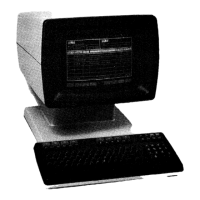
